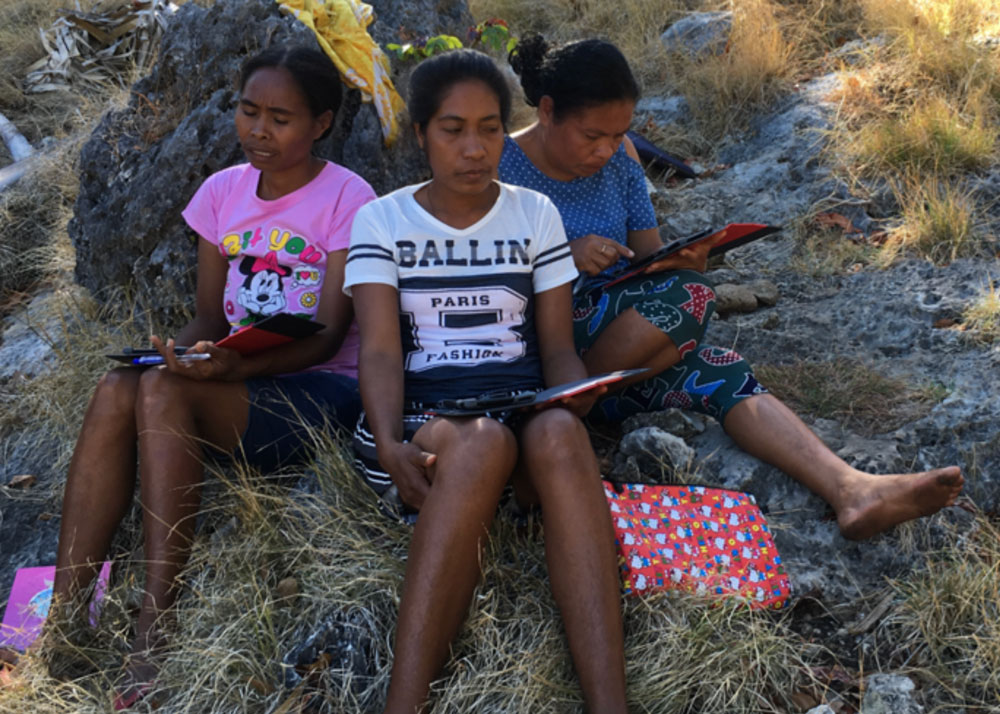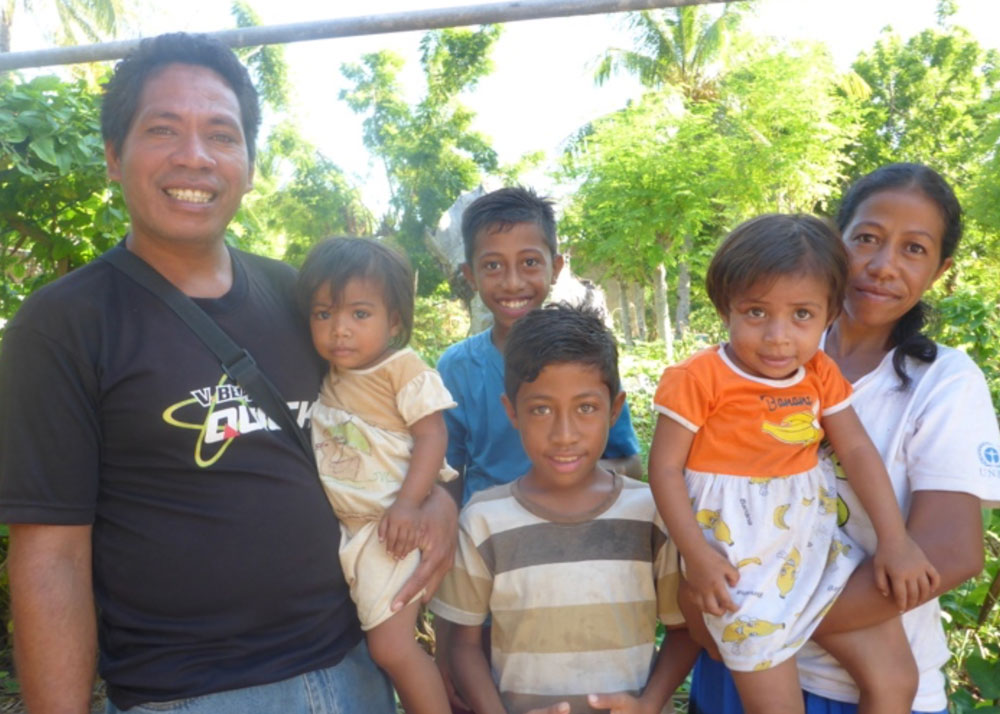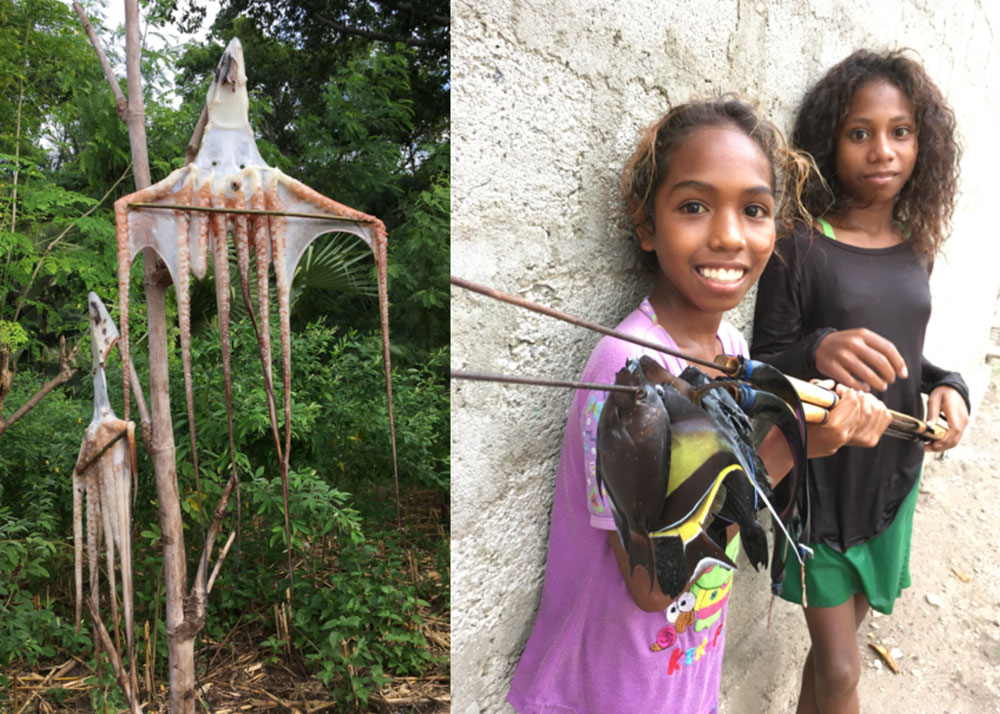

Understanding coastal livelihoods for greater impact in Timor-Leste
July 3, 2019
As part of our efforts to support and encourage young Australians in study, careers and volunteering in international agricultural research, the Crawford Fund State Committees proudly support our International Agricultural Student Awards. The 2018 recipients of these Awards were announced in May, and we are enjoying the process of sharing the journey of these 22 dynamic Australian tertiary students as they gain international agricultural research experience and expertise.
Throughout 2018 and the early part of this year, the successful Award recipients will travel to their host countries to research and explore their chosen topic areas. You can follow their progress here on the Crawford Fund website and read more about their findings, learnings and any challenges they encounter.
To-date we have featured the experiences of University of Western Australia student, Christian Berger; Queensland University of Technology PhD candidate, Thomas Noble; University of Melbourne student, Kimberly Pellosis; Luisa Olmo from the University of Sydney; Rachael Wood from Charles Sturt University; University of Melbourne student Ziyang Loh; Lucinda Dunn from the University of Sydney; Jessica Fearnley from the University of New England; the Australian National University’s Jacinta Watkins, University of Queensland Honours student, Tamaya Peressini, the University of Adelaide’s Mathu Indren, University of the Sunshine Coast PhD student Samantha Nowland, Charles Sturt University’s Brooke Kaveney, and most recently, the University of Sydney’s Marisa Mitchell and the University of Sunshine Coast’s Chieu Hoang Dinh.
Thanks to The Crawford Fund QLD Committee, we share with you this summary of James Cook University (JCU) student Ruby Grantham’s research into understanding of the role of fisheries in livelihood strategies in coastal communities in Timor-Leste. The project builds on the outcomes of ACIAR’s project, FIS/2010/097: Exploring options to improve livelihoods and resource management in Timor-Leste’s coastal communities. It also supports the activities proposed as part of ACIAR project FIS-2017-032: A nutrition-sensitive approach to coastal fisheries management and development in Timor-Leste and Nusa Tenggara Timur Province, Indonesia.

Ruby Grantham travelled to Timor-Leste to undertake the seasonal livelihoods survey project (“The Livelihoods Project”), as part of an ongoing project aimed at providing a more complex and dynamic understanding of the role of fisheries in livelihood strategies in coastal communities.
“The Crawford Fund Student Award enabled a panel design survey to be implemented by local data collectors, which generated higher quality and more detailed data than cross-sectional surveys that rely on recall,” said Ruby, a PhD candidate at the Australian Research Council Centre of Excellence for Coral Reef Studies, at JCU.
“It also provided an opportunity to train and employ local women which improved community engagement and provided direct benefits to the study communities,” she said.
Timor-Leste is one of the world’s hungriest countries. Food insecurity and malnutrition are a key challenge. According to data from 2012-2016, it had the highest rate of child stunting globally (50.2%) and was ranked 110 out of 119 countries in the global hunger index in 2018.
Food insecurity in Timor-Leste is characterised by an annual lean season where shortages in staple crops, often forces households to adapt their livelihoods and draw on coping strategies. Dependency on rainfed subsistence agriculture, low crop production, and poor infrastructure result in widespread food shortages in the months leading up to the main harvest. The lean season is particularly acute in rural areas. Livelihood dependency on subsistence agriculture and the associated food insecurity reflect Timor-Leste’s underdevelopment, which is in part, the legacy a long history of colonisation, instability and conflict.
“Improved food security in Timor-Leste will require a better understanding of livelihood strategies, how and why they vary seasonally,” said Ruby.
“This information would help policy to reconcile economic development, environmental protection and the needs of local communities. Coastal communities are often some of the most vulnerable to environmental and socio-economic changes, which can have significant implications for local livelihoods and human well-being.”
The Livelihoods Project was carried out in two coastal communities on Atauro Island, Timor-Leste. Both study communities are protestant and have populations of roughly 120 people. The communities have similarly low levels of economic development, there are few income earning opportunities and livelihoods are predominantly subsistent. Small solar panels used to power light bulbs are the only source of electricity for most households.
The survey collected daily household data on livelihood activities, incomes, expenditures and consumption, and it was implemented by local data collectors following a panel design. Preliminary findings show that livelihoods on Atauro are a dynamic patchwork of activities structured to smooth income and consumption fluctuations. Livelihood dynamics are shaped by seasonal cycles in the weather and sea conditions that determine fishing and farming activities.

“The findings of The Livelihoods Project support improved coastal management strategies and are relevant to food security, development and conservation policy in Timor-Leste,” said Ruby.
The project’s data collector roles were offered to women only. Women are often more aware of household livelihood activities and consumption than men and women are typically more comfortable talking to other women, so women were employed as data collectors to increase the likelihood of survey respondents being women. Further, women have fewer income earning opportunities, so employing women was a means through which The Livelihoods Project was able to have a direct and positive impact on the participating communities.
A total of 1422 household surveys were undertaken for the project. A majority of the surveys focus on the core panel of 30 household who were surveyed every day during the six survey weeks. The level of detail captured by the data provides important insights into the dynamics of household livelihoods and the analysis of this huge dataset is ongoing, with these findings preliminary and unquantified.
The three main livelihood activities on Atauro are crop farming, livestock and fishing, each of which serve a different livelihood purpose.
All households in the study communities farm staple crops including corn, peanuts, various types of bean, pigeon pea and pumpkin in small fields. The crop farming cycle is determined by rainfall. Crop farming is almost an entirely subsistence activity and households only very occasionally sell crops. A majority of harvest is dried and stored to be eaten as the main source of household food for the year. The success of the yearly harvest and the quantity of staples crops that a household is able to store is a major determinant of household food security and the severity of the lean season.
Livestock are kept predominantly as a form of insurance by households and most households own a small number of pigs, goats and chickens. Livestock can be sold for a relatively high price and can therefore provide a source of income in an emergency and to purchase food during the lean season. Livestock are only eaten on special occasions, such as weddings and church events.
Fishing activities and fish catch, and therefore the contribution of fishing to livelihoods, are highly dependent on sea conditions which are determined by the seasonal winds, geographic location of fishing areas, and the effect of the lunar cycle on tides and fish behaviours.
During the calm season most fishers go on at least one fishing trip a day. Catches in the calm season are high, and fish is eaten fresh, stored (dry), given away to other households and sold (fresh and dry). Comparatively, when sea conditions are bad many households do not go fishing at all, sometimes for weeks at a time. Catches in the bad season are usually small and therefore only used for household consumption. Poor sea conditions not only limit fishing, but market access as well, making it difficult for households to earn income and purchase food.
Dietary diversity is highest during months when good sea conditions and crop harvests coincide and lowest when bad sea conditions coincide with the lean season.

“Understanding livelihood structures is important for reconciling the needs of people with environmental protection and better coastal management. The findings from this project are therefore relevant to development, food security and conservation policies,” said Ruby.
“The detailed consumption data collected can be used to assess nutrition and identify seasonal shortcomings in individual and household diets, and to inform more effective food security strategies and support better health and consumption decision-making in households,” said Ruby.
“This project was successful because of the partnerships it has developed and utilised,” said Ruby.
James Cook University is recognised globally for producing high quality and high impact marine research. Timor-Leste, as one of the world’s marine biodiversity hotspots and being relatively accessible to Queensland, has the potential to be an important research site for JCU, and the seasonal livelihoods project was implemented with on-the-ground support from WorldFish Timor-Leste, therefore strengthening research partnerships between Queensland and Timor-Leste.
“The high standard of The Livelihoods Project is a result of the combination of academic expertise from JCU and the local expertise of WorldFish Timor-Leste,” said Ruby.
“The Livelihoods Project enabled by the Crawford Fund has provided many benefits to me. From a professional perspective, the experience of developing and managing a locally implemented survey has developed my research design and fieldwork skills. The quantity and quality of the data collected has strengthened my PhD research project.”
“From a personal perspective, I feel very privileged to have had the opportunity to work so closely with the communities of Akrema and Adara. I learnt a huge amount about life, society and history in Timor-Leste through the stories that the people shared with me. I developed good friendships with many of the community members and I was humbled by their generosity and kindness.”
“The Livelihoods Project has been dependent on the support and engagement of many people. The project would not have been possible without the patience and generosity of the research assistants who translated and facilitated training and community engagement, the village chiefs who permitted and supported the research activities, the data collectors, who invested a huge amount of time and effort to learn and implement the surveys, and the households who participated so dedicatedly. The project was far more successful and enjoyable as a result of the continuous kindness and wisdom of the staff at WorldFish Timor-Leste.”
“I am also very grateful to my three PhD supervisors, Graeme Cumming, David Mills and Cristian Rojas who have provided me with intellectual and financial support. Finally, I would like to acknowledge Natalia da Costa. Natalia was one of the original 6 data collectors and her hard work and friendship were very important to the success of The Livelihoods Project. Natalia sadly passed away in late February 2019 due to complications with a still birth. Natalia was a wonderful young woman, she was a kind and gentle wife and mother of two, and a keen gardener with a huge smile,” she concluded.




